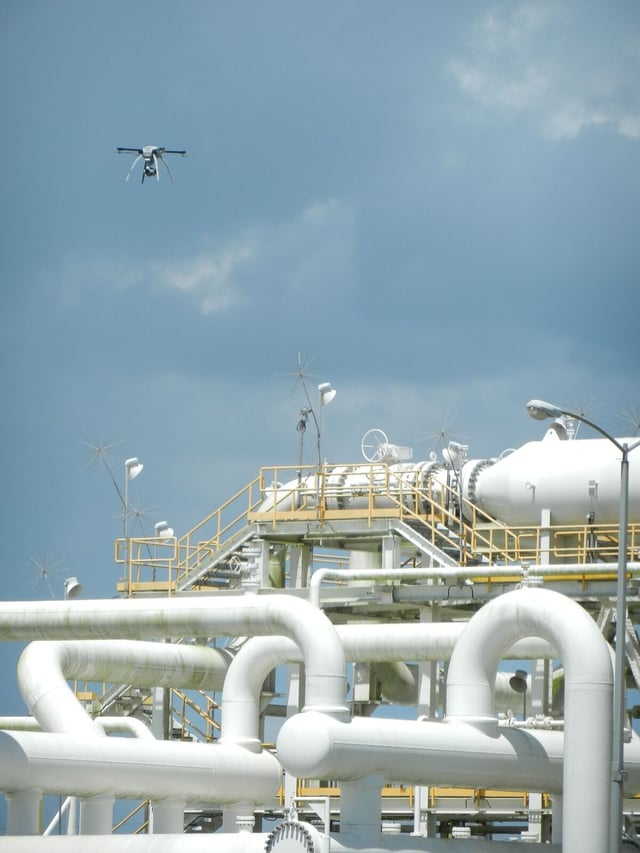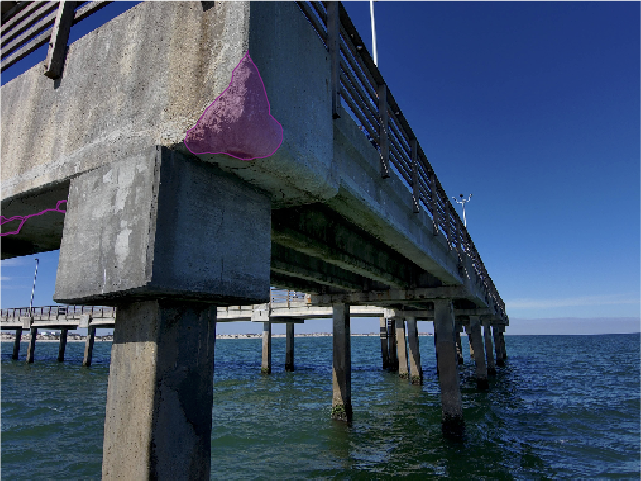The challenge of scheduling pipeline maintenance and surveillance tasks has become extremely complicated for many reasons. Some of these reasons include:
- The ability to detect system malfunction such as compressor downtime, and oil or gas leaks;
- Efficiently responding to pipeline servicing or regular maintenance requests;
- Providing efficient and cost effective manpower utilization;
- Being able to access remote areas in a timely manner;
- Being able to quickly respond to natural disasters such as hurricanes that could cause equipment downtime;
- Being able to watch out for terrorist activities.

Currently, many vendors provide software tools for scheduling and maintenance. While these software tools address many of the challenges mentioned, they cannot address problems that deal with access to remote pipeline locations, dealing with natural disasters, and providing real-time surveillance against terrorist activities or sabotage.
Drones and robots could be deployed to address challenges that others tools cannot. It should be no surprise to know that the use of drones inspections to perform pipeline maintenance and surveillance tasks will soon become standard practice. This article discusses some of the ways that drone-based inspections make it easier to address problems related to scheduling pipeline maintenance and surveillance tasks.
Drones improve upon current methods for inspecting oil equipment
Regular inspections are necessary to ensure that oil equipment is in safe and working order. Human inspections are ideal but they are neither cost effective nor safe when it involves inspecting equipment in remote locations or in locations that are not easily accessible. After natural or man-made disasters that involve oil or gas leaks, it is preferable to send drones to inspect the equipment rather than to use technicians and maintenance personnel.
Benefits that drone-based inspections provide are obvious:
(a) They eliminate the danger that technicians and maintenance personnel are exposed to in unsafe locations,
(b) They can be deployed quickly to remote and unsafe locations,
(c) They provide cost savings.
Drones are the future of Pipeline Maintenance
The oil & gas industry is being threatened by a shift toward the use of clean, renewable energy.
Consequently, lower oil prices and over supply make it necessary for the oil industry to cut operational costs to remain profitable.Because maintenance costs make up a hefty portion of operational costs, savings provided by oil and gas drone inspections are very welcome.
Apart from providing cost savings in manpower utilization, a significant benefit that drone-based inspection provides is the ability to detect oil leaks. A new drone developed together with General Electric is capable of detecting gas leaks at distances up to half a mile from a well site. This is clearly preferable to having an oil technician walking around an unsafe well site with an infrared camera.
Conclusions
- Many of the challenges that make it difficult to schedule pipeline maintenance and surveillance tasks cannot be solved by software tools that are currently available.
- Drone or UAV based inspection has been demonstrated to provide compelling reasons to integrate their use into a maintenance and surveillance plan for oil equipment.
- Even if the world moves toward the use of clean, renewable energy, drone-based inspections will remain just as valuable and necessary for equipment maintenance and surveillance.
- Integration of software tools, GPS technology, non-contact sensors and robotic technology into drones will make them indispensable for future pipeline maintenance and surveillance tasks.
- It may not be a stretch to assume that drones will also have the capability to launch strikes against terrorists who attack pipelines and oil equipment.
Tags
Oil and Gas

.png)
